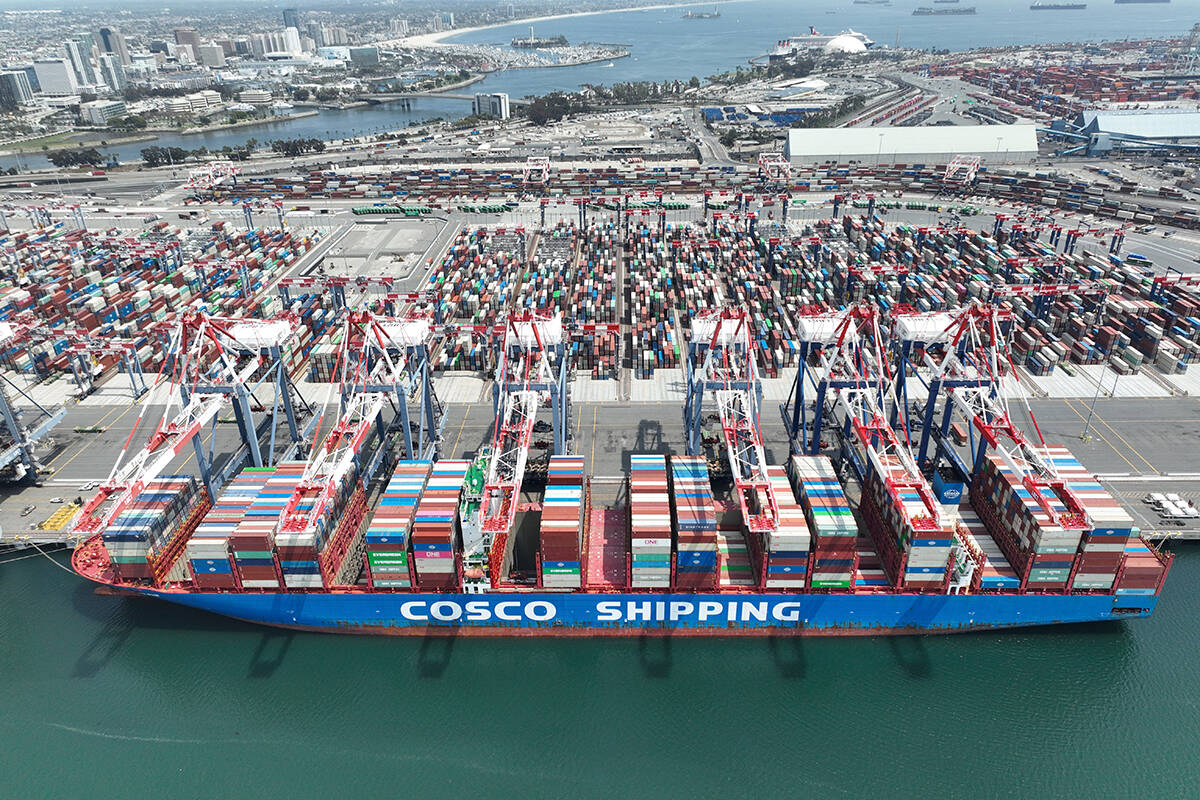Pea prices are rising and there is no reason to forecast a weakening heading into next season, says a pulse crop analyst.
“We are having some difficulty on the shipping side with vessels waiting. It has really given the current crop a boost in terms of pricing,” said Marlene Boersch, managing partner with Mercantile Consulting Venture Inc.
Grain companies were offering $5.50 per bushel for January/February/March delivery at many locations across the Prairies earlier this week, up about 25 cents per bu.
Boersch said exporters are trying to fill a shortfall at port position. By her estimation ships either sitting at port or arriving shortly will require 240,000 tonnes of peas.
Read Also

U.S. softens fees on Chinese shipping
The U.S. starts charging new fees on Chinese ships on Oct. 14. What are the ramifications for their ag exports?
But according to the Canadian Grain Commission’s last report there were only 179,900 tonnes in the licensed elevator system as of Jan. 25.
“It means that we need to get some product out there pronto or else (exporters) are going to be faced with some very expensive demurrage bills.”
Boersch expects grain companies have already covered the 60,000 tonne shortfall by buying product in the countryside, but she doesn’t see the demand for peas slacking off soon, leading to further upward pressure on prices.
Rob Tisdale, special crops business risk manager for Agricore United, said demand at port position doesn’t always translate to higher prices for growers due to the time lag associated with winter shipping problems.
“You can get this jumping around during this season of a port premium and a country discount until the freight straightens itself out.”
He noted that pea prices are already “darn good” and claimed there is no mad scramble by line companies to source more peas for waiting ships.
“It’s more like a normal scramble,” he said.
But he agreed with Boersch that the outlook looks promising for the crop.
In November, India sent a clear market signal that it foresees a continuing need for peas when it extended the deadline for reinstating its 10 percent duty on pulses by four months until the end of July.
“The fundamentals are there for continuing strength,” said Tisdale.
The Indian government maintains pulse plantings are up and that the crop to be harvested in March and April is shaping up much better than the last one.
But Boersch said Canadian exporters continue to make new sales into that region, which is odd for this time of year, when India is on the verge of harvest. And moisture maps indicate it is dry in that part of the world.
“I have doubts that their own crop is as good as they let on,” she said.
When she factors in Australia’s recent pulse crop disaster and an innovative marketing program to Pakistan, where Canadian shippers have successfully combined canola and pea shipments, the outlook is rosy.
“A lot of that indicates to me that the demand is likely going to be there from the Indian subcontinent,” said Boersch.
She wouldn’t be surprised if 2006-07 carryout stocks dropped to 180,000 tonnes, down from her 2005-06 number of 290,000 tonnes.
And Boersch expects more of the same in the coming year even if growers seed another large 3.5 million acre crop of peas.
“Even if you assume a healthy acreage, the demand has been such that it will create a relatively tight situation next year.”
That leads her to believe pea prices will crest the already seasonal high mark of $5.50 per bu.

















